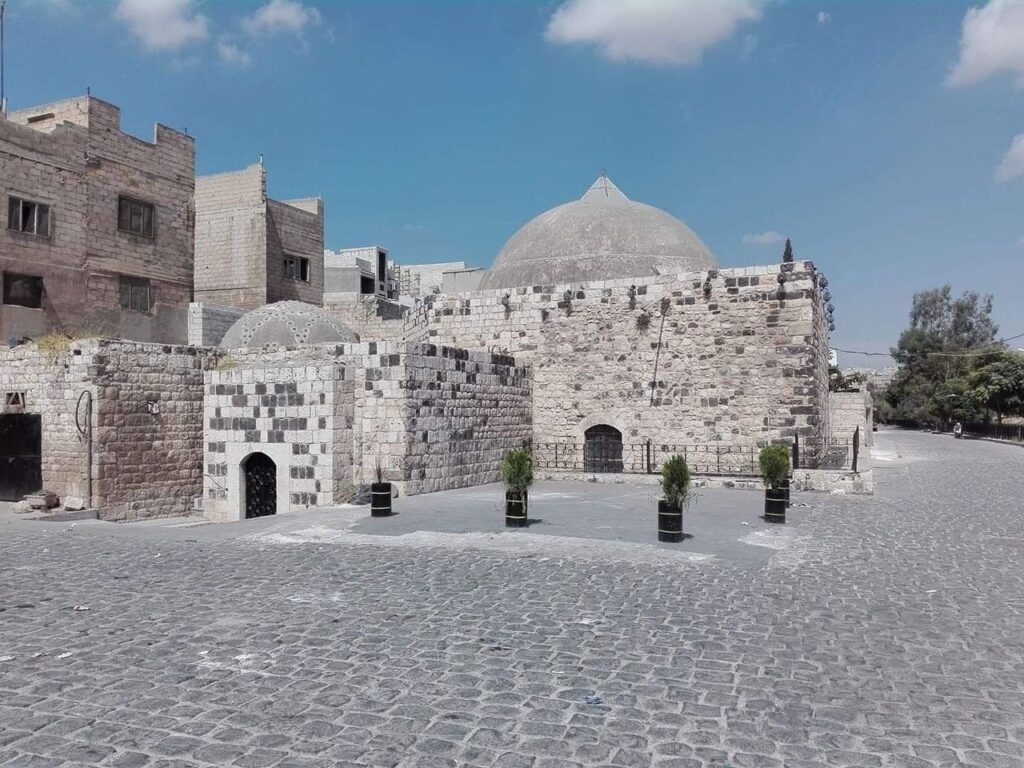
Sultan’s Hammam (Hama)
The Sultan’s Bathhouse stands as one of Hama’s oldest Ottoman hammams, constructed in the 16th century. It was intentionally named in homage to Sultan Suleiman the Magnificent, as indicated by

The Sultan’s Bathhouse stands as one of Hama’s oldest Ottoman hammams, constructed in the 16th century. It was intentionally named in homage to Sultan Suleiman the Magnificent, as indicated by
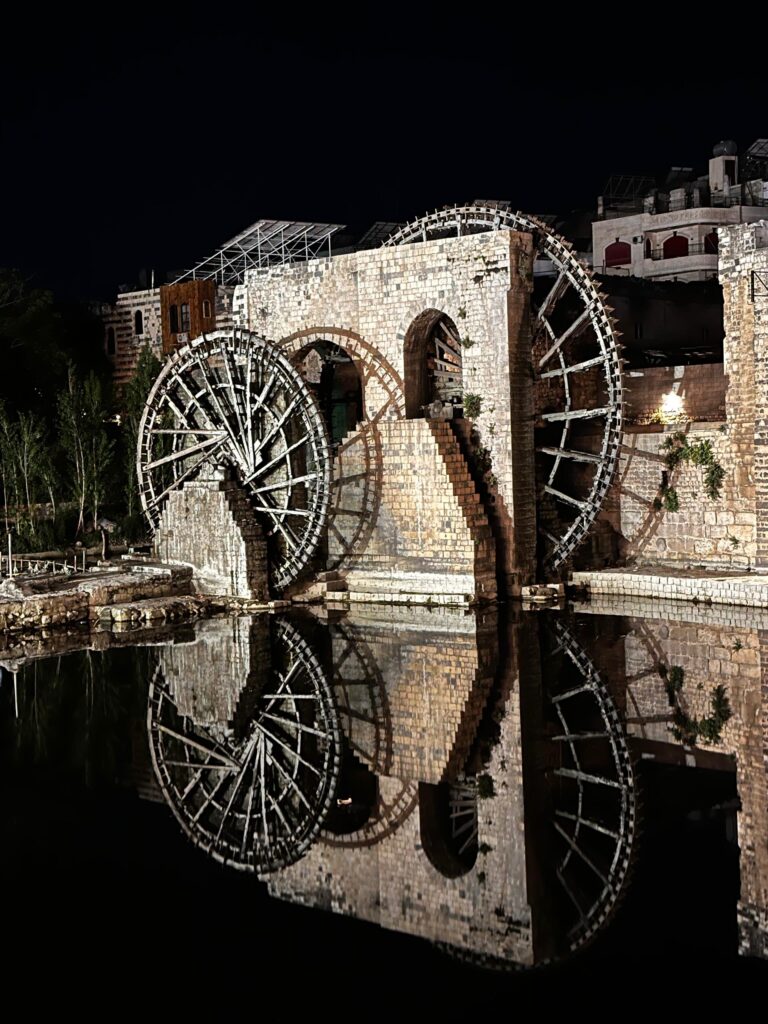
This complex comprises three adjacent Norias of varying diameters (14–18 m), constructed in the 15th century for the influential Ja’abari family, known for their commercial prominence. A distinguishing feature is
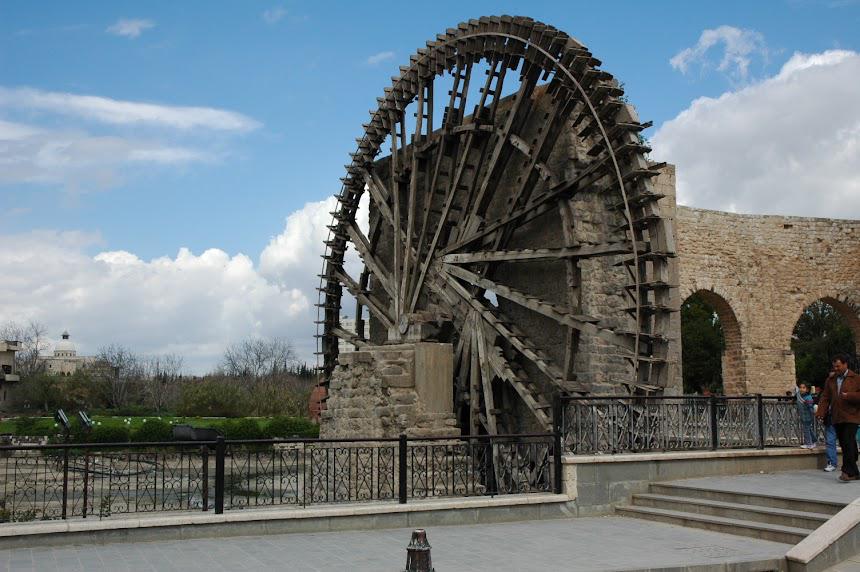
This noria, located by the historic Orontes River bridge, stands as the oldest wooden wheel still operating with its original mechanism. Boasting a diameter of approximately 22 meters and featuring

Perched atop a rocky outcrop enveloped by a pine forest southwest of Masyaf, lies the Ismaili Qalaat Rusafa, a fortress constructed in the late 12th century to safeguard the passages
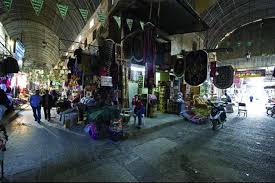
Dating back to the 14th century, the city’s oldest market stretches 180 meters south of the norias. Its arcade is covered by an arched wooden roof supported by semi-pointed basalt
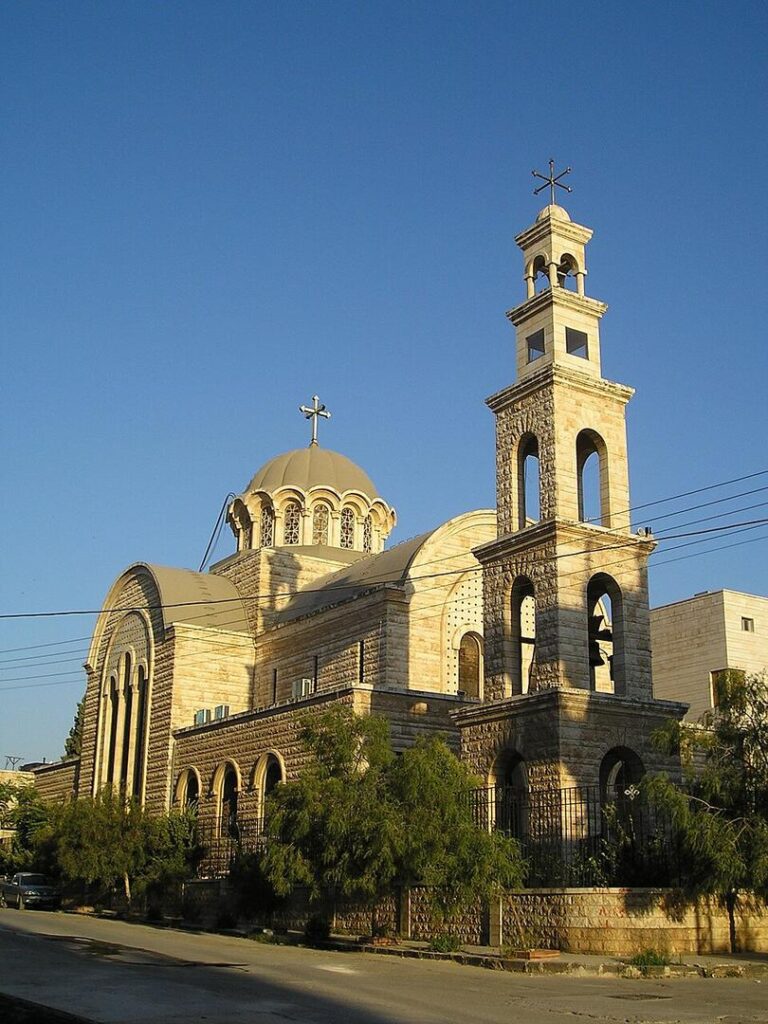
St. George’s Monastery is located in the city of Mhardeh, on the western slope of the Orontes Valley, approximately 25 km north of Hama. This region, historically known as “Little
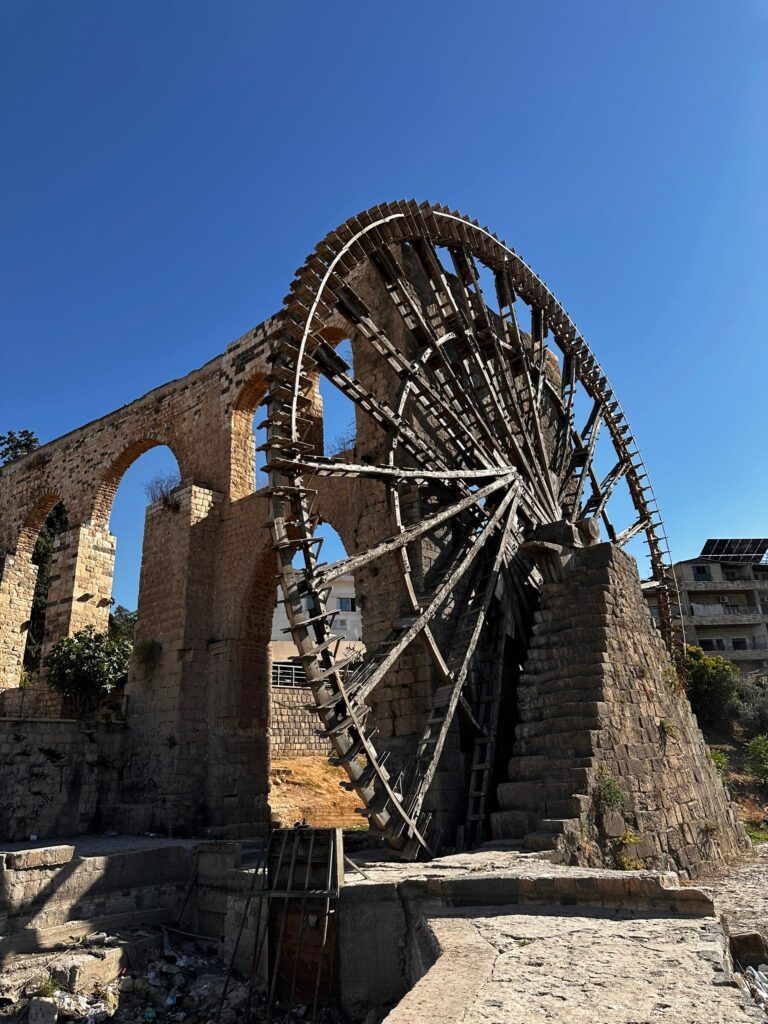
This complex comprises three adjacent Norias of varying diameters (14–18 m), constructed in the 15th century under the patronage of the influential Al-Ja’bari merchant family. A distinguishing feature is a
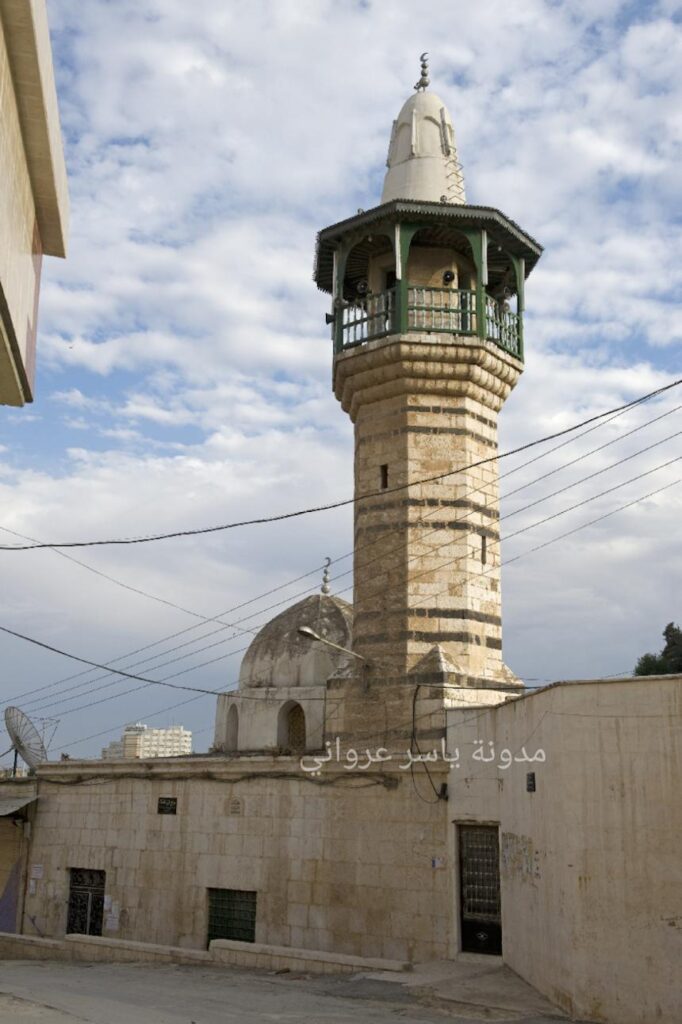
Perched atop a conical hill, a diminutive Ismaili castle commands views over the central Ghab plain. Constructed in the 12th century, its fortifications were continuously reinforced until the Mamluk period.
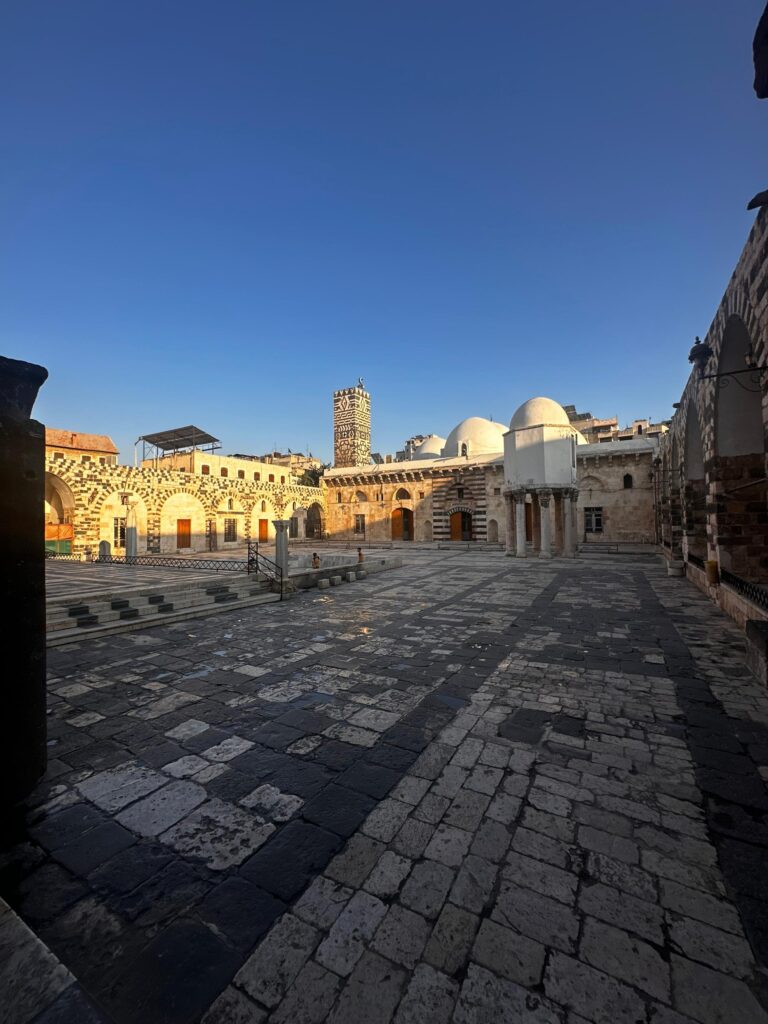
Mirza Castle, a Crusader fortress, rises like the prow of a stone ship above a mountain ridge in the far northwest of Hama. Constructed by the Franks in the early
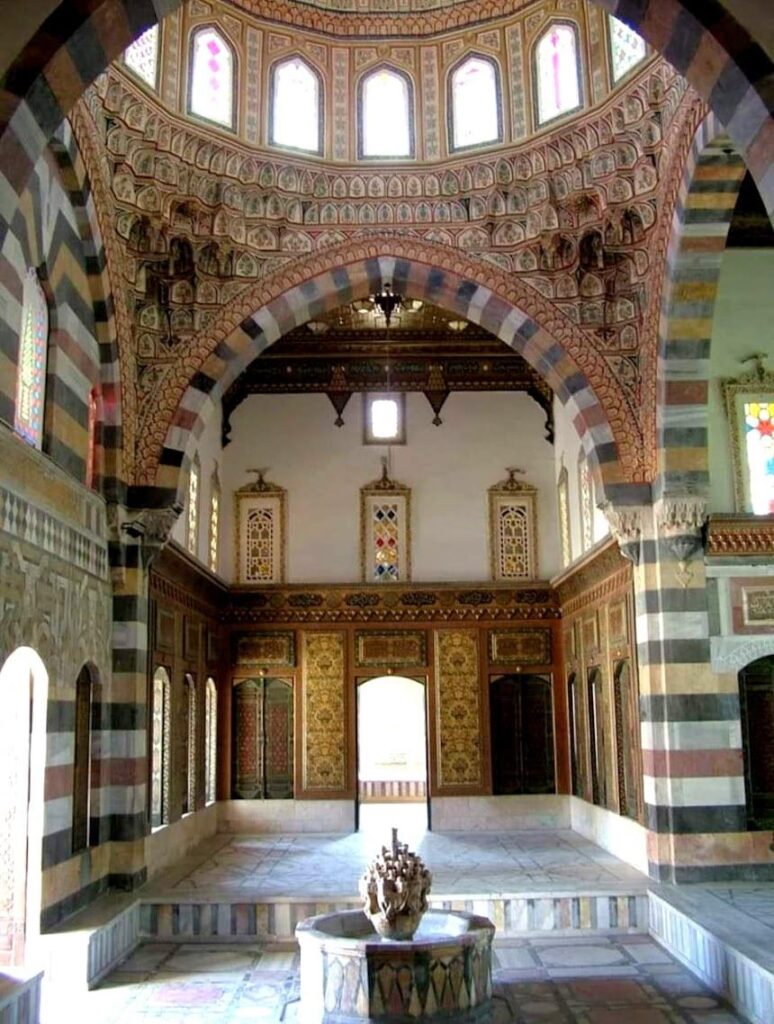
This stone bridge, featuring three semi-circular arches constructed from dressed limestone, serves as the main eastern entrance to the citadel. Its foundations are notable for their squared stones secured with

جميع الحقوق محفوظة لصالح JCI Aleppo
All rights reversed to JCI Aleppo